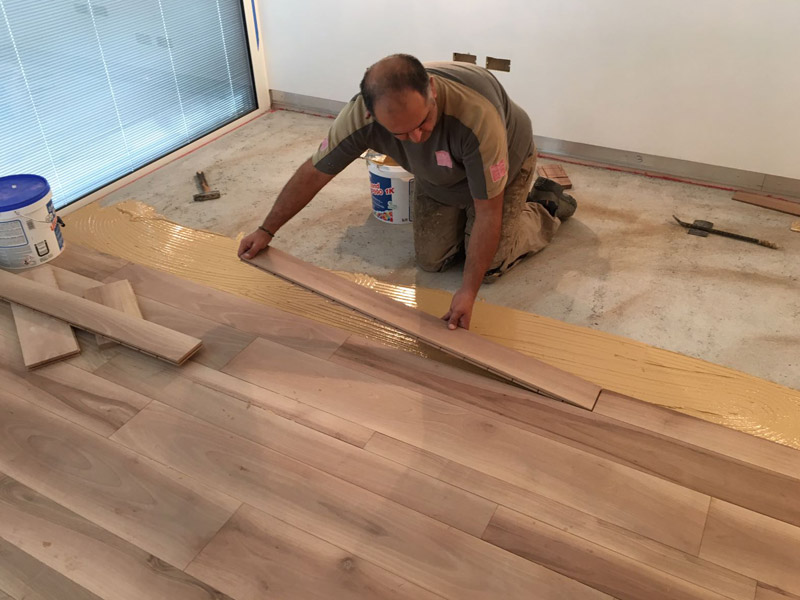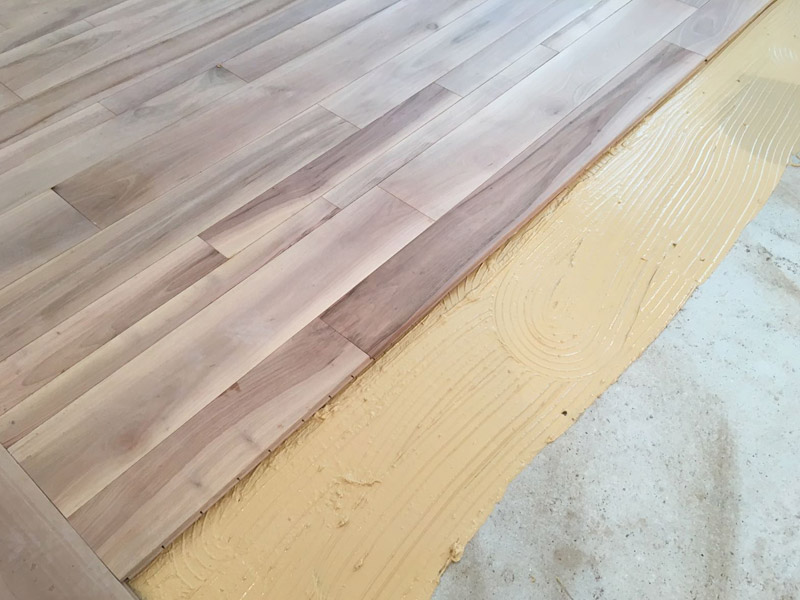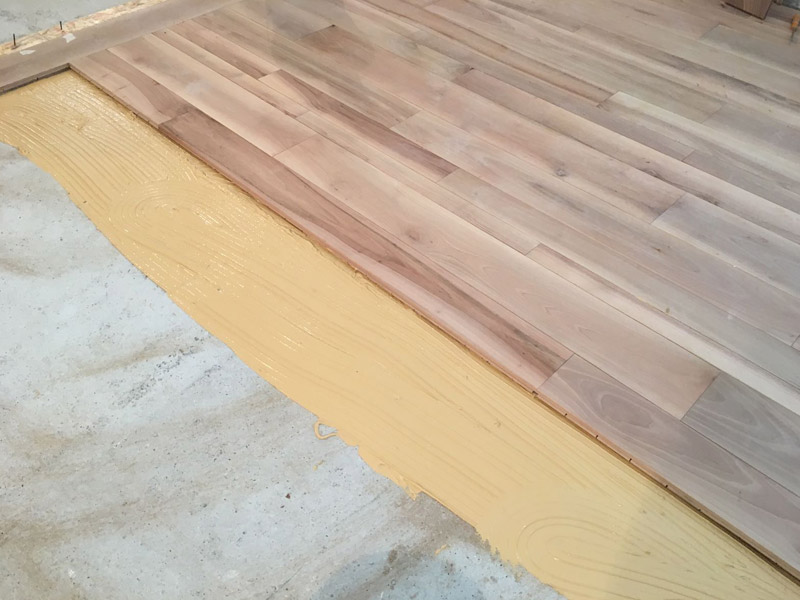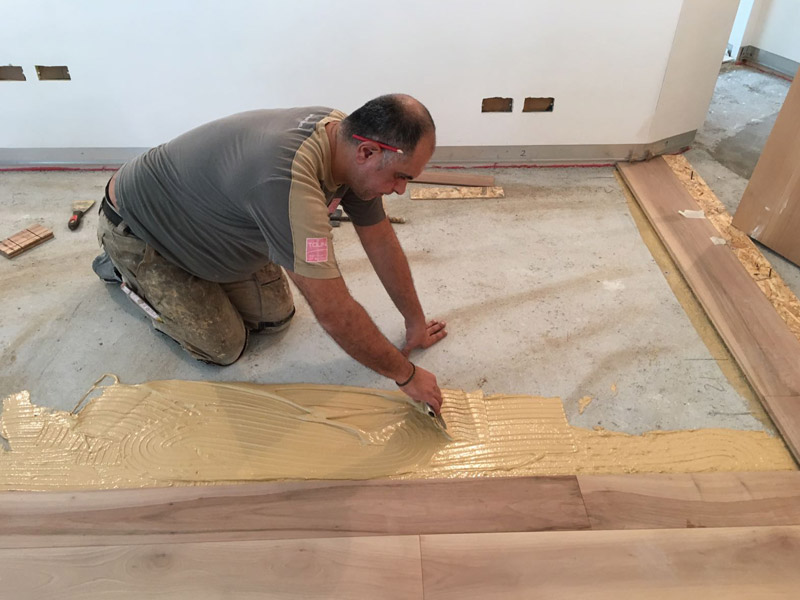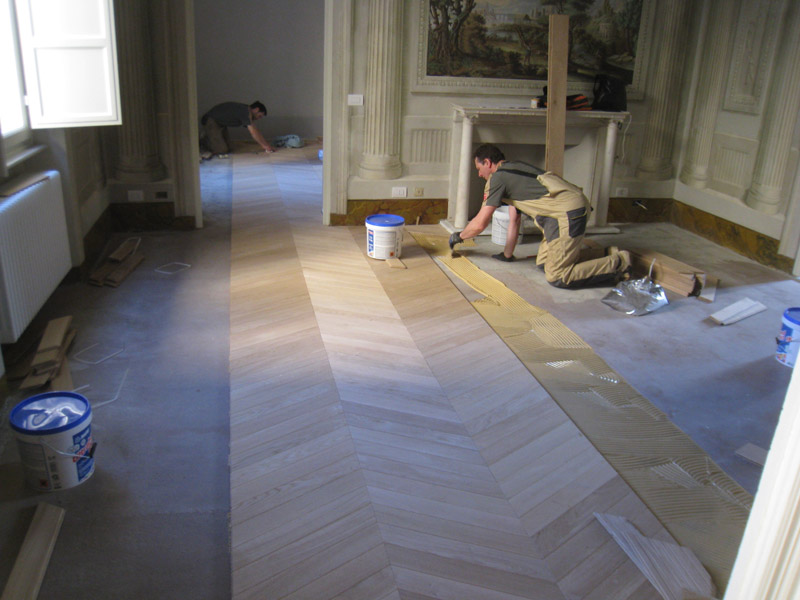Parquet glue laying is carried out by laying the glue with a special spatula on the concrete screed. In order to allow the natural expansion of the wooden floor, due to the variation of environmental humidity conditions, an expansion joint is left around the perimeter of the paved area.
If our customer chooses this type of glue laying it will be necessary to know all the details that will ensure its perfect performance, analyzed below.
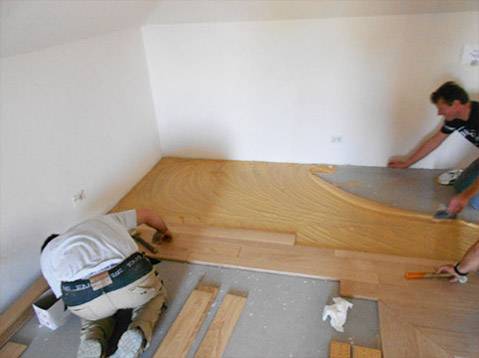
Concrete Screed
Concrete screed can be created in different ways based on the different building needs: traditional sand-concrete screed, anhydrite screed, fibrate screed, etc…
The perfect screed should be evenly thick over its entire surface, it must look like thin floated plaster, in order to allow an optimal adhesion of the glue for parquet laying, and it should not be dried too quickly. This is mandatory, because an inadequate drying and maturation of the screed could create a dusty surface, on which the glue would not be able to adhere perfectly, with the consequent detachment of the parquet wood.
characteristics that a good screed should have:
- Compact thickness
- Adequate total thickness
- Rigidity
- Superficial hardness
- Absence of cracks or fissures
- Dry and protected against leakage and vapor diffusion (use of waterproof sheaths on ground floors)
- Flat and perfectly levelled
- Sufficiently smooth
- Clean
Drying of the Screed
Each screed, based on the materials used, will require a certain hardening, maturation and drying time. Drying is essential for the proper installation of parquet floors, and it can be verified through a carbide hygrometer, which using a small portion of the concrete screed will establish the degree of humidity still present in the screed itself.


